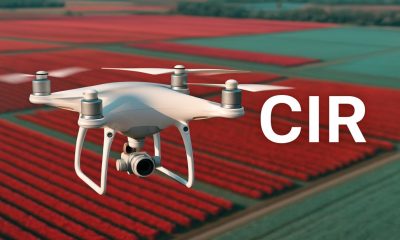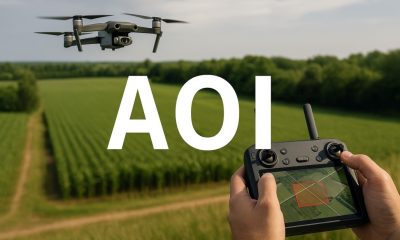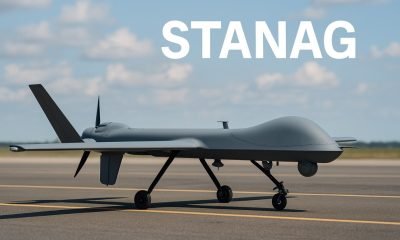- Acronym Guide
- AAM
- ABS
- AC
- ACAS
- ADS-B
- AFAC
- AGL
- AI
- AIM
- ALS
- AM
- AMA
- ANSP
- AOI
- APPI
- AUV
- AUVSI
- ARPAS-UK
- ASTM
- ATC
- BVLOS
- CAA
- CAAC
- CAB
- CASA
- CATT
- CBO
- CBR
- CBRN
- CDMA
- CDR
- CFR
- CIR
- COA
- COMINT
- CORS
- COTP
- COTR
- CPTED
- CV
- C2
- DAA
- DEM
- DFI
- DFS
- DGCA
- DHS
- DOD
- DPA
- DPEs
- DRG
- DRO
- DSM
- DSMX
- DSP
- DSSS
- DTM
- EASA
- EFT
- EO
- EOD
- EO/IR
- ELINT
- EMI
- ESC
- EVLOS
- eVTOLs
- FAA
- FCC
- FCS
- FHSS
- FICCI
- FLIR
- FOB
- FOV
- FPS
- FPV
- GBDAA
- GCP
- GCS
- GDPR
- GML
- GNSS
- GPS
- GSD
- GVC
- HDR
- HOGE
- IACRA
- ICAO
- ICS
- IMU
- INS
- IR
- ISA
- ISR
- ITU
- JARUS
- LAAMS
- LAANC
- LAATM
- LAI
- LBA
- LIDAR
- LOS
- LSALT
- MAC
- MAVLink
- MLIT
- MMS
- MSL
- MTOM
- NDAA
- NCSL
- NFZ
- NIST
- NMEA
- NOTAM
- NPA
- NPRM
- NTIA
- OBIA
- OEM
- OFDM
- OOP
- PASM
- PAV
- PCV
- PdM
- PEC
- PIC
- PID
- PIPL
- PLD
- PM
- PN
- PPK
- PPS
- PSM
- PWM
- UAM
- UAOP
- UAS
- UASTM
- UAV
- UCAVs
- UHD
- UHF
- USV
- UTM
- RAIM
- RCC
- RCS
- RFI
- ReOC
- RePL
- RMS
- ROI
- RPAS
- RPC
- RTH
- RTK
- SaR
- SAR
- SARP
- SBAS
- S.Bus
- SBIR
- SEDENA
- SfM
- SFOC
- SIGINT
- SLAM
- SMS
- SORA
- STANAG
- STTR
- sUAS
- TCAS
- TCCA
- TFR
- TIN
- TOF
- TP
- TPS
- TSA
- VHF
- VLOS
- VTOL
Drone Acronyms
What is DOD (Department of Defense) & How Does it Work?
Published
2 months agoon
By
Jacob StonerTable Of Contents

Definition
DOD, or Department of Defense, is a federal agency responsible for managing and coordinating all national military operations and defense-related efforts in the United States. In the context of drones, the DOD oversees the development, acquisition, deployment, and regulation of UAV (Unmanned Aerial Vehicle) systems for use in surveillance, reconnaissance, combat, logistics, and strategic defense operations around the world.
Usage
The DOD deploys drones across branches including the U.S. Army, Navy, Air Force, Marine Corps, and Space Force. UAVs are used for intelligence gathering, persistent aerial surveillance, border security, electronic warfare, target acquisition, and even humanitarian aid delivery. These operations span both domestic and international missions.
Relevance to the Industry
As one of the largest adopters of UAV technology, the DOD heavily influences drone development trends, regulatory frameworks, and security standards. DOD-funded innovations in drone autonomy, AI integration, swarm tactics, and stealth design often trickle down into commercial and civilian drone applications. The department also sets procurement standards for compliant systems—often requiring NDAA certification, military-grade encryption, and cyber-secure data handling.
How Does DOD (Department of Defense) Work?
The Department of Defense (DOD) integrates UAVs (Unmanned Aerial Vehicles) into its global operations through a multi-tiered system involving research, acquisition, tactical deployment, and strategic coordination across all military branches. Here’s how the DOD uses drones to enhance defense and security operations:
Research and Development (R&D)
The DOD invests heavily in drone innovation through agencies like DARPA (Defense Advanced Research Projects Agency) and the U.S. Army Combat Capabilities Development Command. These programs advance drone capabilities in artificial intelligence, autonomy, swarm coordination, edge computing, and stealth technologies. Innovations are field-tested in simulation labs and live exercises.
Procurement and Standardization
Once UAVs meet operational criteria, they are procured through defense contractors under strict compliance frameworks. These systems must be:
- NDAA-compliant (free from banned foreign components)
- Secure (with encrypted communication and hardened data systems)
- Capable of withstanding electronic warfare and contested environments
Deployment Across Military Branches
Each branch of the military integrates drones based on mission profiles:
- Air Force for high-altitude ISR (Intelligence, Surveillance, Reconnaissance) and combat operations
- Army for tactical reconnaissance, frontline support, and supply drops
- Navy and Marines for maritime surveillance and shipborne deployment
- Space Force for orbital tracking and satellite-integrated UAV networks
Mission Integration and Control
UAVs are controlled via secure ground stations or airborne command centers. Pilots and mission analysts operate drones remotely, receiving live video, radar feeds, and sensor data. In some scenarios, drones operate semi-autonomously with pre-programmed mission logic, reducing pilot workload and enabling simultaneous operations across large areas.
Real-Time Data Fusion and Decision Support
Collected data is streamed to joint operations centers, where it is fused with satellite imagery, ground intel, and other ISR assets. This integrated data supports real-time decisions for:
- Targeting and engagement
- Battlefield movement coordination
- Humanitarian relief planning
- Infrastructure threat assessment
Security, Ethics, and Oversight
DOD drone operations follow rules of engagement and undergo strict review, especially in combat zones. Ethical oversight ensures that drone usage aligns with international laws and humanitarian standards, while cybersecurity teams monitor drone platforms to prevent hacking or signal interference.
Through layered systems, secure infrastructure, and cutting-edge technology, the DOD’s drone program enhances U.S. defense capabilities worldwide—setting the standard for UAV use in high-stakes, high-security environments.
Example in Use
“The Department of Defense (DOD) deployed high-altitude drones to monitor enemy troop movements and provide real-time intelligence to ground forces in the region.”
Frequently Asked Questions about DOD (Department of Defense)
What types of drones does the DOD use?
Answer:
High-altitude long-endurance (HALE) UAVs like the RQ-4 Global Hawk.
Medium-altitude UAVs like the MQ-9 Reaper for strike and surveillance.
Tactical drones like the RQ-11 Raven for infantry support.
Experimental systems like AI-powered swarms or stealth drones under DARPA.
What are DOD drones typically used for?
Answer:
Intelligence, Surveillance, and Reconnaissance (ISR)
Close air support and precision strikes
Electronic warfare and signals intelligence
Logistic missions (e.g., delivering medical supplies in contested zones)
Disaster relief and humanitarian support
How does DOD influence drone innovation and security?
Answer:
The DOD funds R&D into drone autonomy, swarm logic, sensor fusion, and resilient communications.
It sets high cybersecurity standards and enforces compliance with national security requirements (e.g., prohibiting use of foreign-made components in sensitive missions).
Lessons from defense deployments inform commercial use cases such as disaster response, surveillance, and logistics.
For examples of these acronyms visit our Industries page.
As the CEO of Flyeye.io, Jacob Stoner spearheads the company's operations with his extensive expertise in the drone industry. He is a licensed commercial drone operator in Canada, where he frequently conducts drone inspections. Jacob is a highly respected figure within his local drone community, where he indulges his passion for videography during his leisure time. Above all, Jacob's keen interest lies in the potential societal impact of drone technology advancements.











